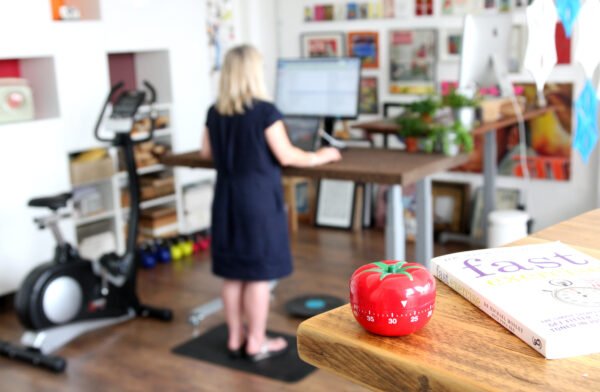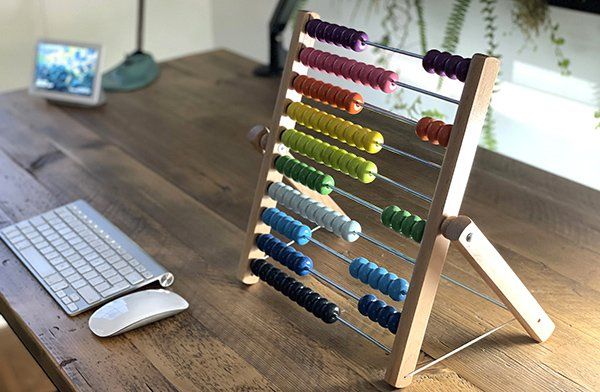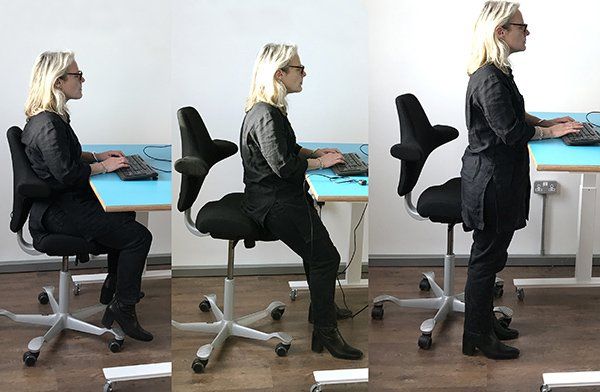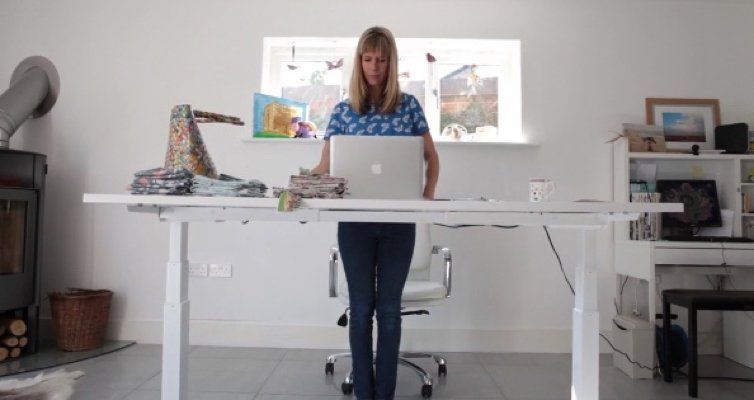Benefits of Active Working from Home and in the Office
A movement for change
“The things you do every single day, the things that don’t look dramatic, that don’t even look like they matter, do matter. They not only make a difference, they make all the difference” (Jeff Olson – The Slight Edge)
The problem with our sedentary ‘sitting’ culture
Sitting for long periods of time is thought to slow down the metabolism, which affects the body’s ability to regulate blood sugar, blood pressure and break down body fat. Scientific studies have linked excessive sitting with being overweight, type 2 diabetes, some types of cancer, and early death.
The seated position also puts stress on the back and neck muscles. It’s even worse if we slouch because poor posture can cause compression on the discs in our spine. Sitting can also cause the hip flexors to shorten, so our hips can become tight and lose their flexibility!
Some ‘sitting’ facts
The average person spends more than 18 years of their adult lifetime sitting down.
A typical week for many involves 51 hours and 44 minutes of sitting. This equals more than 7 hours a day sitting in a chair – 5 of which are at work.
However, knowing this won’t necessarily change the bad habits that we build up over years. Sometimes we fail to see why we’re ‘stuck’, so we need to examine our own motivations. The time to make changes may feel right now or in five years’ time. But when we realise how important it is to look after our bodies, then simply ‘being busy’ is no longer an excuse!
Active working – being mindful
The daily ‘40-2, 40-2, 40-2’ programme that we’ve put together is easy and simple to follow, but it needs to be repeated daily so that it becomes a habit and part of your workplace routine. It starts with understanding that the psychology underlying behavioural change is complex. As a result of numerous studies, scientists have come up with a logical set of stages that we pass through on our way to making positive change. This set of stages is known as TTM, which stands for Transtheoretical Model of behavioural change.
Not ready – precontemplation
At this stage, we’ve not thought about or recognised a need for changing a particular behaviour or problematic situation.
Getting ready – contemplation
Here we’ve begun to think actively about the need to change a behaviour. This stage can last anywhere from a moment to an entire lifetime. This is the stage in which ‘obstacles to change’ tend to appear. People can get stuck at this stage for a long time.
Ready – determination
We begin preparing ourselves mentally and often physically for action in the immediate future. Determination is the culmination of the decision to change, and it fuels the engine that drives you to your goal.
Action – starting off
We have changed or modified our bad habits and start to develop healthy new ones. In this case, with active working, more movement, deep breathing, exercising and stretching.
Maintenance – keeping it up
This stage is defined as when people have kept up their new habits for more than six months. People develop a confidence that they can sustain the changes they have made, and will work hard to avoid a relapse.
Termination or relapse
This stage is just part of any process leading to behavioural change and is extremely difficult to avoid. If you view relapse as only one more stage in the process of change, rather than as a failure, you’re more likely to be able to return quickly to your desired behaviour – maintenance.
Achievement
At this final stage, new habits will just be part of your working lifestyle. There is every chance that you will continue with the behaviour because the gains and advantages have become greater than the losses, and there is a huge incentive to keep moving on.
The ’40-2, 40-2, 40-2′ action plan in a nutshell
40 minutes sitting, 2 minutes of deep breathing.
40 minutes perching, 2 minutes of exercise.
40 minutes standing, 2 minutes of stretching.
Keep it simple, keep it easy, repeat throughout the day

Time and the Pomodoro Technique
At Flomotion we believe the time-management technique of setting a timer at regular intervals during the day is a key element to your active-working action plan. It signals change and pulls you away from your thinking and the computer. By taking a break every half-hour or so, you can allow yourself a few minutes of headspace.

Using a visual support – the abacus
An abacus or coloured counters can be an effective method of visually celebrating your progress and good habits throughout the day. Allocate colours for activities that you want to work through, such as blue for hydration, yellow for deep breathing, red for exercise, etc. Slide them across to keep a tally of your achievements.

Group good behaviours together
During your activity break, whether it’s deep breathing, stretching or doing something a little more energetic, take the opportunity to hydrate. As a result, you will also take a screen break, giving your eyes a well-earned rest at the same time, grouping three positive behaviours together.

Sitting to perching to standing
When we’re working at a desk, it’s important not to get stuck in one position for too long. Transitioning from sitting to perching and standing will give your body the posture break it requires. If you don’t have the option of working at a sit-stand desk you can still take the breaks and do the routines.

Breathing reconnecting mind & body
Possibly the most powerful stage in the action plan is the use of a deep breathing technique. It helps us to develop a postural awareness of how the body is feeling. A relaxed mind-body connection allows you to explore areas of stress, stiffness and pain and begin to use movement, stretching and exercise to address these issues.

Increase your heart rate with exercise
Regular physical activity improves muscle strength, boosts endurance and delivers oxygen and nutrients to our tissues, helping the cardiovascular system to work more efficiently. It’s also a scientifically proven mood booster. The same endorphins that make us feel better also help with concentration and a sharper memory.
Fast exercise for more energy
Do you want to feel better, have more energy and even add years to your life? Spending two minutes exercising three or four times a day may not seem much, but has huge benefits and is a good starting point. Remember to keep it simple, easy and repetitive. Make exercise part of your daily routine.
High-intensity (HIT) training is about elevating your heart rate for 30 or 40 seconds then resting for the remainder of that minute. By boosting your heart rate, you boost your metabolism and fire up your body to burn fat.
Exercise….
Helps to control weight
Combats health conditions and diseases
Improves mood and makes you feel happier
Boosts energy levels
Can help with relaxation and sleep quality
Is fun… and sociable!
Can help your brain health and memory
Is great for your muscles and bones
Stretching – we were designed to move
Stretching daily keeps the muscles flexible, strong and healthy. We need that flexibility to maintain a range of motion in our joints. Without stretching, the muscles can shorten and become tight. As we age, flexibility becomes even more important.
Stretching…
Improves flexibility
Increases range of movement
Improves performance in physical activities
Increases blood flow to the muscles
Improves posture
Helps to heal and prevent back pain
Is great for stress relief
Helps to decrease tension headaches
Articles about Active Working
Why sitting at a desk all day is bad for you
We’ve compiled a list of the top 15 reasons we can find - not to sit all day! It’s not an exhaustive list but as a guide it covers the general areas for concern.
How to stay active when working from home
Read our ultimate guide on how to stay active when working from home. What are the best ways to keep active and look after your wellbeing.
“The body will become better at whatever you do or don’t do. If you don’t move, the body will become better at not moving. If you move, the body will allow more movement.” (Ido Portal)
Get in Touch





